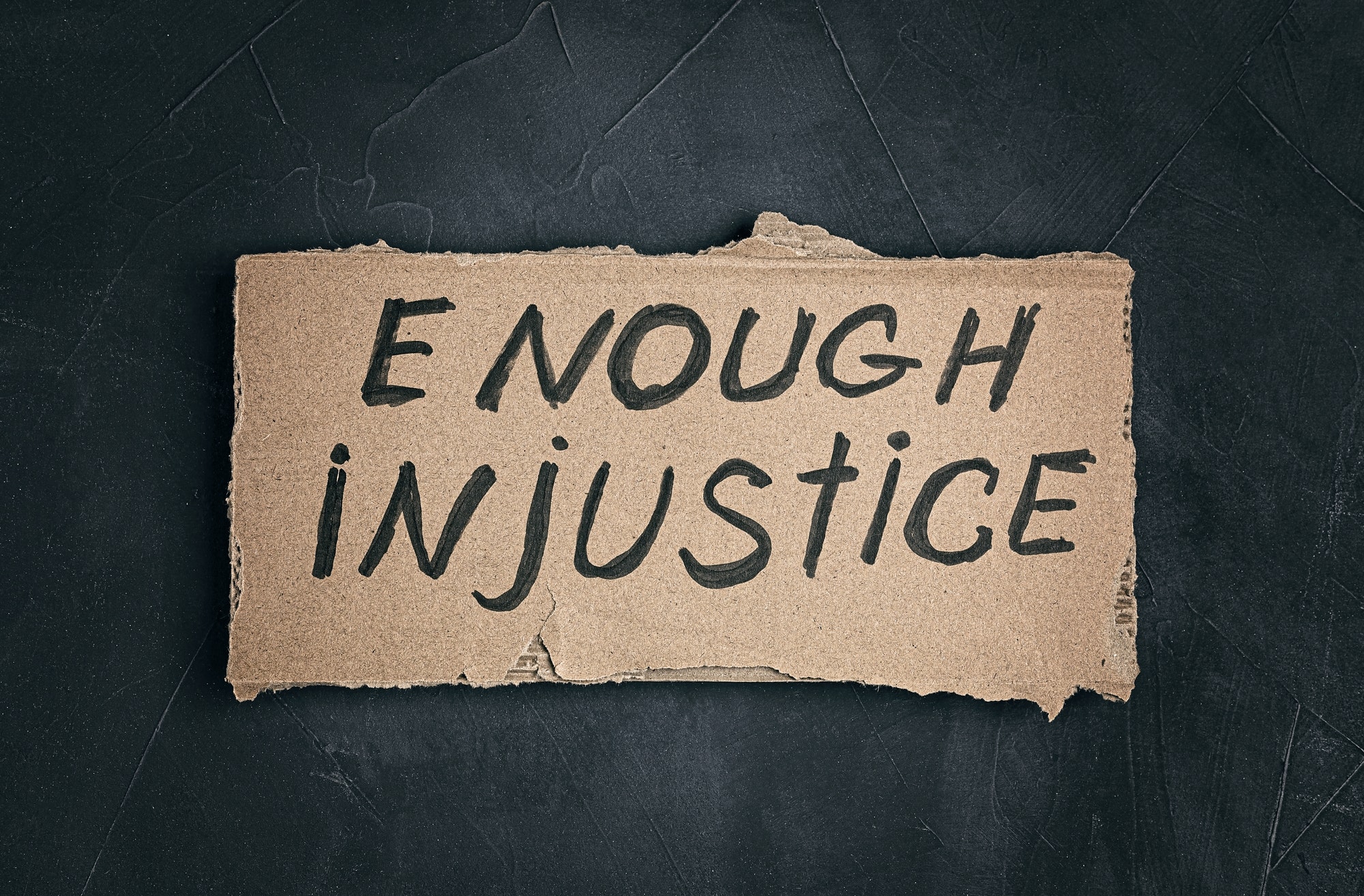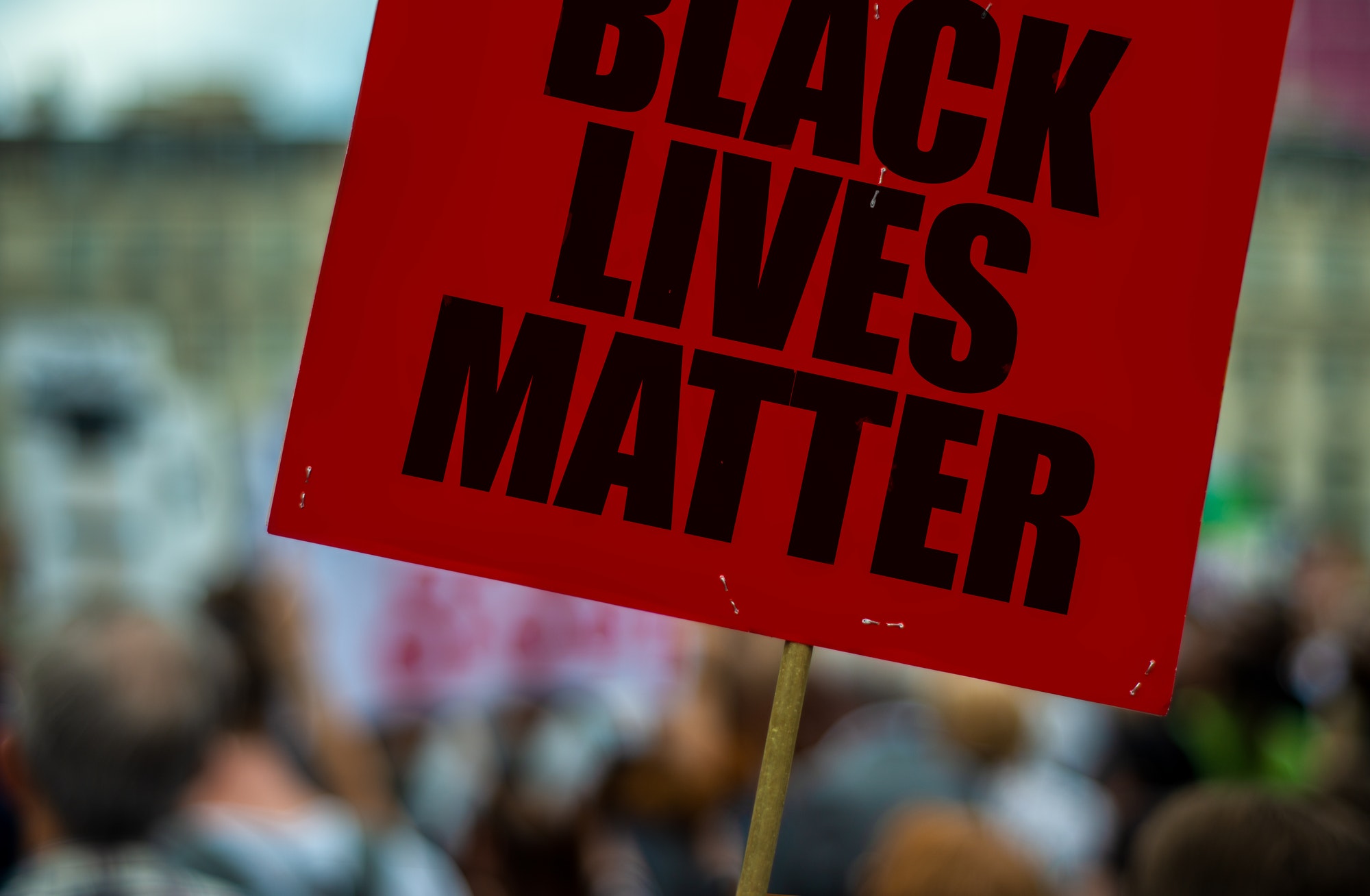Report: Black Workers in L.A. Face ‘Jobs Crisis’ That’s Causing Decline in Black Community

Monique Judge, theroot.com, March 21, 2017.
A new study conducted by the University of California, Los Angeles, says that the city’s black community is in decline as a direct result of the lack of jobs available to black workers, who are more likely to remain unemployed or drop out of the workforce entirely as a result of the 2007-2009 recession.
The report, “Ready to Work, Uprooting Inequity: Black Workers in Los Angeles County,” was published Tuesday in collaboration with the Los Angeles Black Worker Center and the UCLA Institute for Research on Labor and Employment, and found that although black workers have lost blue-collar jobs at the same rate as whites in the county, they seem less likely to find replacement work, the Los Angeles Times reports.
Additionally, 17 percent of black workers were unemployed on average from 2011 to 2014, compared with 9 percent of white workers, and 25 percent of black workers who had a high school degree or less were unemployed, compared with 14 percent of white workers.
As the Times notes, while education helped bridge the gap, it did not completely erase it because 9 percent of black workers with at least a bachelor’s degree were unemployed over that period, compared with 7 percent of white workers.
The report says, “Los Angeles is in the throes of a black jobs crisis.”
From the Times:
The lack of work is part of the reason many black residents have abandoned Los Angeles altogether, at a time when the county’s population boomed, the report says. The black population in the county plunged by 122,032 people from 1980 to 2014, according to the report. The county has gained around 2.5 million residents overall during that time.
In the meantime, black workers have flocked to the Inland Empire, which includes Riverside and San Bernardino counties. Those counties gained a combined 260,494 black residents from 1980 to 2014.
Lola Smallwood Cuevas, founder of the Los Angeles Black Worker Center, told the Times: “Black workers are often the last hired and the first fired. If we don’t address the crisis, we will have a city and a county where there are no black workers.”
The report notes that “while the black community was once a thriving part of L.A.’s landscape and remains integral to the county’s cultural and economic life, it has long been in a critical decline.” This is directly attributed to the lack of jobs for black Angelenos.
The report says that “economic and social hardship is pushing the black community out of Los Angeles County” and notes that although blacks in Los Angeles are significantly more educated than previous generations, they experience a lower labor-participation rate and a significantly higher unemployment rate than their white counterparts.
From the report:
The study calls for a stabilization of black families and communities through the creation of well-paying, quality, accessible jobs. Among other solutions, report authors recommend the unionization of black workers, an expansion of hiring benchmarks that include underrepresented workers, and an institutionalization of partnerships with credible community organizations to implement targeted outreach, recruitment, and retention programs. Through an analysis of current and historical census data, a comprehensive literature review, and the collection of worker’s stories and case studies, the report looks at the experience of the black community in Los Angeles through a labor and employment lens. It details how the lack of access to quality jobs is adversely impacting the community and draws a portrait of the challenges that black workers in Los Angeles face.
Now, if only we could get some of these suggestions implemented so that the black community in Los Angeles can be revived and revitalized.
The Working While Black Campaign
View Original Article (reprint of Worker’s Independent News coverage)
UCommBlog, March 10, 2017.
WIN reports that Black work is synonymous with low pay, Congressional Black Caucus is looking to change that

The National Black Worker Center Project is launching a #Working While Black campaign advocating a “New Deal for Black America”.
Executive Director Tanya Wallace-Goburn says to Trump and members of Congress that they should bring an end to the economic abuses of Black workers with a vision that goes beyond the desire for political power.
[Tanya Wallace-Goburn]: “Rather than focusing on filling the pockets of and wallets of billionaires, we need to focus on building projects that don’t extract wealth from our communities and build wealth within our communities.
And that’s something that all of us – no matter what your race or ethnicity is – can align with.”
The #Working While Black campaign will expose the impacts of racial and economic injustice in the workplace through workers telling their stories.
[Tanya Wallace-Goburn] :”And our goal is to launch a strategic communications and organizing campaign that’s designed to mobilize and communicate the experiences and challenges, aspirations and achievements of Black workers.
Black work has been synonymous with low paying jobs that leave Black workers vulnerable.”
The Congressional Black Caucus is urging Trump to seek its council on “The New Deal For Black America” And Wallace-Goburn says the national Black Worker Center Project partners with organized labor.
[Tanya Wallace-Goburn]: “We consider ourselves fortunate to partner with organized labor.
The main ways that we see participation is in our membership. There are many African-Americans that are members of unions and they are also members and supporters of the National Black Worker Center Project.
The other way that we’ve been able to partner with labor is in understanding the necessity to having better jobs created.”
Losing The Black Middle Class
Fortune, March 22, 2017.
A new report from UCLA delves into the very real problems black workers are facing in Los Angeles. “Los Angeles is in the throes of a Black jobs crisis,” it begins. Though the study is city-specific, the findings remind us that it’s hard out there, for some people more than others.
Among their major findings:
- Since the 1980s, the Black population in Los Angeles has declined by over 100,000 residents from 13% to 8% while the Inland Empire has gained over 250,000 Black residents.
- Black workers with a high school or less education experience unemployment at almost double the rate as white workers at the same education level.
- Black workers are underrepresented in professional jobs and have lower rates in manager and supervisory positions.
- Whether working full or part time, Black workers earn only three-quarters of what white workers earn. For Black women, the wage gap is even more severe.
Grim stuff. Here’s one that really got my attention:
- Black workers experience a myriad of negative health outcomes due to racial discrimination in employment
It’s almost like racism is literally breaking people’s hearts.
Los Angeles was one of the destination cities for black folks during The Great Migration, the slow but steady movement of six million African Americans between 1916 and 1970, from the violent repression of the Jim Crow South, to the North and West in search of a better life. Last fall, I asked Isabel Wilkerson, the author of The Warmth Of Other Suns, to explain why this history is so relevant today. “The North had not been – and has never been – forced to deal with the underlying biases and hierarchies that were as present in the South,” she told raceAhead. “When people arrived in these northern cities – looking for work, for better lives – they were met with great hostility and hyper-segregation in housing and education. And it’s dispiriting to see that hostility still exists.”
It also explains, she says, the other headlines of 2016. “Police overreach and brutality cases are a direct result of the unaddressed tensions and hostilities that are still with us. Think about it – Cleveland, Baltimore, Ferguson/St. Louis, Chicago, and Milwaukee – the most dramatic cases of police brutality are all happening in the places where people sought refuge.” And history repeats. The study suggests that black people in the Los Angeles area are feeling the need to move again.
This report drops as we are also engaging in a fraught, and long overdue conversation about white middle-class workers, many of whom are now facing several generations at or near poverty. Why were they abandoned? What is the real remedy? But history reminds us that it’s impossible to have one conversation without the other. Our stories are joined together: To leave out the experience of one group of people is to deny a fundamental reality of the other. That is the truth of our difficult history, and like it or not, no rallying cry or political fist-shaking can make it disappear.
On Point
Trump administration publishes its first list of immigrant crimes
The “Weekly and Declined Detainer Outcome Report,” is putting pressure on sanctuary cities that are protecting immigrants from deportation, and is designed to shame local jurisdictions into turning over undocumented persons to federal authorities. Univision analyzed the report: common criminal charges are domestic abuse, driving while intoxicated, assault and robbery and sexual assault. The majority of people were charged not convicted, and most come from Latin American countries.
The hijab as a symbol of feminist resistance
Women who have not worn hijab, even if their mothers do, are starting to wear it as a symbol of defiance and feminist strength, reports USA Today. The movement to wear hijab also includes non-Muslim women who don it in solidarity. The hijab itself is controversial; critics worry that the garment oppresses women. “I do believe hijab support feminism,” said one hijabi student. “The way you look at it from a religious perspective, it empowers you by strengthening your relationship with God. It’s a step you are taking to further yourself within your own religion.”
Uber to make sexual harassment findings public
An internal investigation into sexual harassment allegations against the ride-sharing company will conclude at the end of April. Board member Arianna Huffington said in a call with reporters, “Whatever the investigation finds will be honored by everyone at Uber.” It is hoped the move will reassure the public that Uber’s troubled culture is transforming, though Huffington was quick to add that the removal of CEO Travis Kalanick was not on the table. “It’s not something that’s been addressed because it has not come up, and we do not expect it to come up,” she said.
TaskRabbit CEO: “Where I’m from, people don’t know they can be a CEO of a tech company”
Stacy Brown-Philpot has been a tech treasure for ages now, a Stanford MBA who rose up the ranks at Google – she also started the black Googler network – then joined TaskRabbit as COO, then CEO. The company has embraced empathy from the start; all taskers are paid at or above minimum wage. “[W]hat TaskRabbit has done, and many other sharing economy companies, is actually formalized the side hustle in the sense that we are now giving people a way to earn an income that is meaningful.” She talks about growing up working class in Detroit, with a single mom who got it figured out. If you want a roadmap for being successful in tech while maintaining your identity as a black woman who understands the world, this is it.
Johns Hopkins accepts the first black woman as a neurosurgery resident
She’s Ghana-born medical student Nancy Abu-Bonsrah, and she plans on using her training to make a difference. “I am very much interested in providing medical care in underserved settings, specifically surgical care,” she wrote after she learned the news. “I hope to be able to go back to Ghana over the course of my career to help in building sustainable surgical infrastructure.” Abu-Bonsrah immigrated to the U.S. with her family when she was 15. The good news overshadowed the other news of the day: It took until 2017 for Johns Hopkins to find and accept a black woman into their neurosurgery program.
The 2017 Diversity In Tech Awards
They’re May 4th in New York City and Code/Interactive, a non-profit focused on providing industry opportunities for STEM students, have published their list of finalists in four categories: Individuals, Organizations, Initiatives and Media. Many of your favorite people and organizations are on the list. Click through to vote, and be aware raceAhead will be sitting up straight and looking sharp to get on the list for next year.
The Woke Leader
The contradictions in our past
Good, smart, decent people can also hold deeply racist ideas. This is the message of this important essay by Ibram X. Kendi, who offers a review of historical figures who are correctly beloved for their good works yet spared the necessary analysis of where they did real damage. “Some of America’s greatest warriors against anti-Black racism have been some of America’s greatest enforcers of racist ideas,” he writes. Ignoring history does us no favors, he asserts, taking on Harriet Beecher Stowe, Abraham Lincoln, Earl Warren, and John Marshall Harlan, the lone dissenter in the Plessy v. Ferguson decision on southern segregation. “Our Constitution is color-blind and neither knows nor tolerates classes among citizens,” is what Harlan is remembered for. “The white race deems itself to be the dominant race in this country. And so it is,” is what people have forgotten he said.
NYPD officer who delighted the crowd at the Gay Pride parade, dies of a 9/11 related cancer
The video made headlines back in 2015, and kicked off a spate of “cops dancing with underserved communities” videos, which were all fine. But this one was great. Michael Hance, an NYPD veteran, thrilled the city when a cell phone video captured him twerking with a reveler at the Gay Pride parade, while both on duty and in uniform. Hance was neither gay or an official gay officer advocate, he was just moved by the moment. “I was as impressed as I was happy,” said Brian Downey, the president of the NYPD’s Gay Officers Action League said about the video. Hance worked a “bucket brigade” in the pit after the 9/11 attacks; he was diagnosed with brain cancer last November. He was, by all accounts, a good guy.
There are hardly any black craft beer brewers
But why? Dave Infante starts his attempt to gather diversity statistics about the craft beer world with this hilarious observation: “Craft beer is white. Whiter than a ski lodge. Whiter than a Whole Foods in the suburbs.” He pesters the only black brewmaster he could find who tells him to go read. “My best answer is ‘See Coates, Ta-Nehisi,’” said Oliver Garrett of Brooklyn Brewery. Infante smartly digs deeper on his own and comes up with his an answer and another question: craft beer is white because the overall American beer industry has always been white. But why? Let’s discuss over a couple of frosty Brooklyn Lagers.
Quote
—Abraham Lincoln
Employment Equity: The State of the Black Worker & Honoring Trailblazing Women
Milwaukee Community Journal, March 19, 2017.
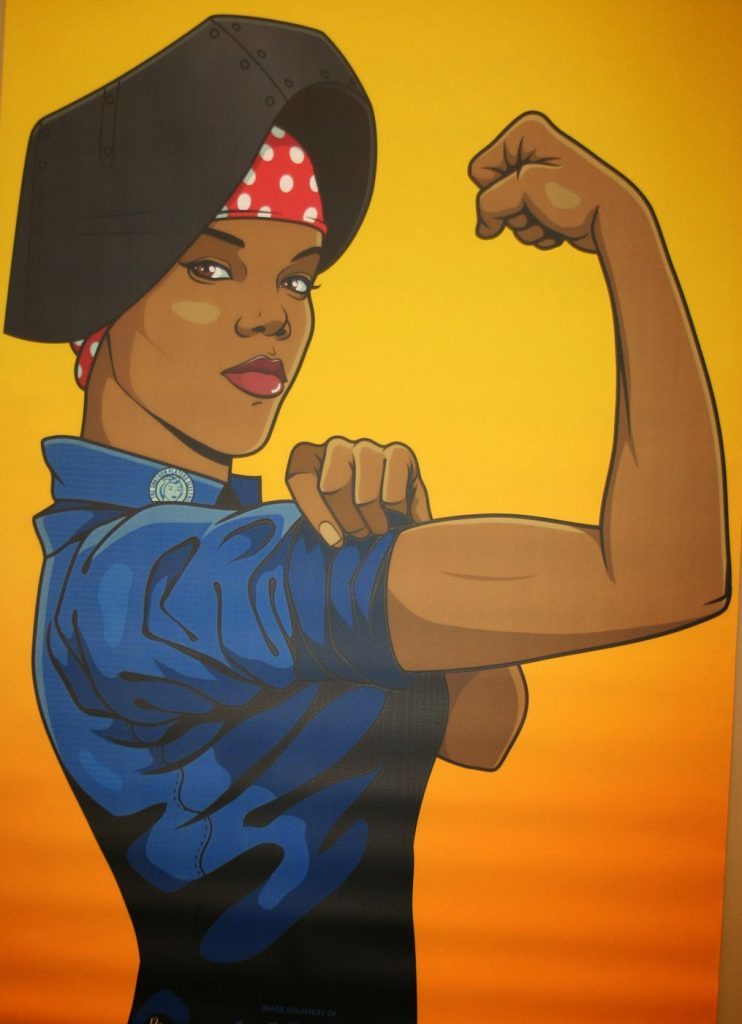
The 2017 National Women’s History Project honorees represent fierce ladies that successfully challenged the role of women in the business world. They continuously confronted the social and legal structures that have kept women’s labor underappreciated and underpaid. Facing stark inequalities in the workplace they fought to ensure less hostile environments for women, succeeded in expanding women’s participation in commerce and displayed their immense power in the paid labor force. As labor and business leaders, the 2017 Honorees paved the way for generations of women leaders to follow.
And follow we MUST because nationally, the unemployment rate for Black women is 7.1 percent. Trump says: “Jobs pour back into our country like we haven’t seen in decades,” while according to the Bureau of Labor Statistics – The number of unemployed persons is at 7.5 million. The unemployment rate has also changed very little over the months since the election and fluctuated by only +/- 0.1% in either direction, decreasing to 4.7 percent. Even in a good economy, the Black unemployment rate (currently 8.4 percent) consistently remains twice as high as the national average. The Black jobs crisis goes beyond unemployment and underemployment. It extends to racist hiring practices wage and salary discrimination, unjust corporate practices, and concrete ceiling that prevent advancement opportunities.
For millions of Black workers and our families, the economic outlook isn’t so bright and the “gains,” proposed policies and cuts are hardly cheerful. In fact, they would likely lengthen the bridge to economic justice and maintain poverty structures that halt full engagement of Black workers in the U.S. economy. This injustice would be particularly challenging for Black women who still face wide wage gaps and are less likely to work in higher-paid occupations.
Optimism for Black workers in a growing economy should rest in our own organizing efforts to strengthen political power, change policies and end systemic racism that blocks access to equal wages and job advancements.

The Baltimore Black Worker Center, in celebration of Women’s History Month, is hosting a forum, “From Girls in the Hood to Women in Construction,” to provide space for Black workers to get connected to apprenticeship programs and building trades. It’s the first in a series of forums to educate workers about what they need for apprenticeships with non-traditional trades. “Black Spaces for Women” – a report for a pilot project with curriculum recommendations― for affiliates of the National Black Workers Center Project aims to help improve practices that support Black women in leadership.
With so much left to be achieved in the advancement of Black economic stability, for inspiration let’s look to these 2017 Honorees that defied the odds of their times by demonstrating women’s ability to create organizations and establish their own businesses proving that women could succeed in every field.

Addie L. Wyatt – Labor Union Leader and Civil Rights Activist
Rev. Addie L. Wyatt passed away in 2012, but spent her life fighting against gender and race based inequities and for equal pay for equal work. In 1953, Wyatt became the first black woman elected to office in Local 56 of the United Packinghouse Workers of America (UPWA) and was also a leader in the struggle for the Equal Rights Amendment. Eleanor Roosevelt appointed her to the United States Commission on the Status of Women in the early 1960s and in 1966, she was a founding member of the National Organization for Women. Wyatt became a founding member of the Coalition of Black Trade Unionists in 1972. Two years later she was the pivotal force in the founding of the Coalition of Labor Union Women (CLUW) where she gave the keynote speech addressing 3,200 women. She even counseled Barack Obama when he was a young community organizer in Chicago.

Alexis Herman – Former Secretary of Labor
At the age of twenty-nine, President Carter’s appointment made her the youngest director of the Women’s Bureau in the history of the Labor Department. In 1992, she became the 1st African American woman to serve as an Assistant to the president as the Director of the White House Office of Public Liaison. Just 5 years later in 1997, Herman was sworn in as America’s 23rd Secretary of Labor and the first African American ever to lead the United States Department of Labor. Currently Alexis Herman serves as chair and CEO of New Ventures, LLC a Risk Management Firm. She continues to lend her expertise and talent to many corporate enterprises and nonprofit organizations. Presently, she chairs the Toyota Diversity Advisory Board. Her nonprofit work today includes: serving as a Trustee for the National Urban League, a member of the Executive Board of Delta Sigma Theta Sorority, Inc., and the president of the Dorothy I. Height Educational Foundation.

Yvonne Walker – President, Service Employees International Union (SEIU) Local 1000
Yvonne Walker is President of SEIU Local 1000. Her efforts towards economic and social justice are felt by workers across the country and around the world. In 1995 she took a job as a legal secretary for the California Department of Justice. In 2008 Walker became President of SEIU Local 1000, the first African American women to serve in this role. As President, Walker represents more than 95,000 public and private sector employees in CA. Her leadership has empowered workers and their families to have a collective voice in the fight for economic and social justice. She leads struggles against cuts to pensions, wages, benefits, and health care. Known as an expert problem solver and innovative thinker, she served on the board of SEIU’s International Futures Committee, which brings together union leaders worldwide to strategize about visions for the future and how to get there. Though in many leadership roles, Yvonne Walker is always on the front lines of the fight with and for the rights of low-wage workers. She has also received awards from numerous organizations, most notably the Coalition of Labor Union Women.
While each Honoree is extraordinary, she is also ordinary in her own way, showing that women business and labor leaders can and should be considered the norm. The fate of Black workers will not lie in the hands of Washington policymakers. Find out more about the National Black Worker Center Project and join the #WorkingWhileBlack campaign to help ensure that Black workers at all levels reap the same benefits of economic growth as the rest of the nation.
Budget Proposal Plus Washington Politics Equals A Bad Deal For Black Workers
Huffington Post, March 17, 2017.
The fate of Black workers will not lie in the hands of Washington policymakers.
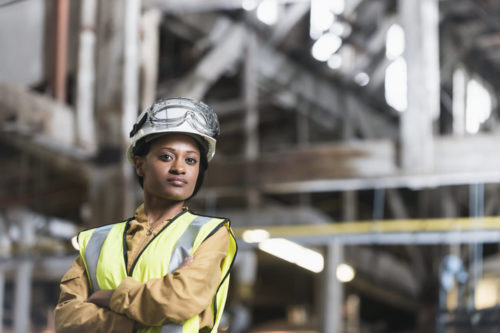
In recent days, headlines are screaming optimism in regards to the nation’s economy. Corporate leaders and the White House administration, say the economy is getting stronger. The Bureau of Labor reported a gain of 235,000 jobs in February—with major gains in construction, manufacturing, healthcare— and a 4.7 percent unemployment rate.
Meanwhile, Washington politicians and President Trump are proposing $54 billion in federal budget cuts that will lead to massive federal worker layoffs. The f
ederal reserve is increasing interest rates in the face of a 2% inflation rate that will push up costs for mortgages, car loans and credit cards. And, the recent Congressional Budget Office (CBO) reported that 24 million people would lose health care coverage over the next 10 years if the proposed House Republican Obamacare repeal is enacted.
Those industries that added jobs? That’s where Black workers are overrepresented in low-wage positions and disconnected from training and apprenticeships.
For millions of Black workers and our families, the economic outlook isn’t so bright and the gains, proposed policies and cuts are hardly optimistic.
For millions of Black workers and our families, the economic outlook isn’t so bright and the gains, proposed policies and cuts are hardly optimistic. In fact, they would likely lengthen the bridge to economic justice and maintain poverty structures that halt full engagement of Black workers in the U.S. economy, particularly for Black women who still face wide wage gaps and are less likely to work in higher-paid occupations.
Even in a good economy, the Black unemployment rate (currently 8.4 percent) consistently remains twice as high as the national average. Nationally, the unemployment rate for Black women is 7.1 percent.
Let’s take a closer look. In Chicago, the jobless rate for Black 16- to 19-year-olds, in 2014, was 88 percent, per a report released by the University of Illinois-Chicago’s Great Cities. A new Los Angeles Black Worker Center report (pending release) cites that the median wage of Black women is only 67% of what white men earn and about 81% of what white women earn. In Baltimore, Black labor economist Steven Pitts found that while Blacks comprise 27.6% of the total workforce and 36.2% of the low-wage workforce, Black female workers make up 40.8% low-wage workers. There, the industries with the highest numbers of low-wage Black workers are restaurants, grocery stores, hotel accommodations, retail, and arts and entertainment.
The Black jobs crisis goes beyond unemployment and underemployment. It extends to racist hiring practices wage and salary discrimination, unjust corporate practices, and concrete ceiling that prevent advancement opportunities. Elected officials snub the necessary, deeper discussions about these policies and practices already ill-serving the nation’s Black workers. They favor political theater instead and whole communities suffer.
As part of the #WorkingWhileBlack campaign, the National Black Worker Center Project (NBWCP) and its affiliates are actively seeking ways to address the Black jobs crisis that locks Black workers out of the nation’s economic prosperity, especially women.
In 2013, Los Angeles Black Worker Center (LABWC), led by Black women, successfully negotiated an employment agreement with the Los Angeles Metropolitan Transit Authority (MTA,). Their agreement mandated that 40 percent of the work hours go to “disadvantaged workers.” Later this month, LABWC will release two reports: “Ready to Work, Uprooting Inequity,” as well as “Black Spaces for Women” – a report for a pilot project with curriculum recommendations― for affiliates of the National Black Workers Center Project to help improve practices that support Black womens’ leadership
The Baltimore Black Worker Center, in celebration of Women’s History Month, is hosting a forum, “From Girls in the Hood to Women in Construction,” to provide space for Black workers to get connected to apprenticeship programs and building trades. It’s the first in a series of forums to educate workers about what they need for apprenticeships with non-traditional trades.
Optimism for Black workers in a growing economy should rest in our own organizing efforts to strengthen political power, change policies and end systemic racism that blocks access to equal wages and job advancements.
The fate of Black workers will not lie in the hands of Washington policymakers. Find out more about the National Black Worker Center Project and join the #WorkingWhileBlack campaign to help ensure that Black workers at all levels reap the same benefits of economic growth as the rest of the nation.
#WorkingWhileBlack – Exposing Impacts Of Racial And Economic Injustice
Workers Independent News (WIN Radio), March 10, 2017.
The National Black Worker Center Project is launching a #Working While Black campaign advocating a “New Deal for Black America”.
Executive Director Tanya Wallace-Goburn says to Trump and members of Congress that they should bring an end to the economic abuses of Black workers with a vision that goes beyond the desire for political power.
[Tanya Wallace-Goburn]: “Rather than focusing on filling the pockets of and wallets of billionaires, we need to focus on building projects that don’t extract wealth from our communities and build wealth within our communities.
And that’s something that all of us – no matter what your race or ethnicity is – can align with.”
The #Working While Black campaign will expose the impacts of racial and economic injustice in the workplace through workers telling their stories.
[Tanya Wallace-Goburn] :”And our goal is to launch a strategic communications and organizing campaign that’s designed to mobilize and communicate the experiences and challenges, aspirations and achievements of Black workers.
Black work has been synonymous with low paying jobs that leave Black workers vulnerable.”
The Congressional Black Caucus is urging Trump to seek its council on “The New Deal For Black America” And Wallace-Goburn says the national Black Worker Center Project partners with organized labor.
[Tanya Wallace-Goburn]: “We consider ourselves fortunate to partner with organized labor.
The main ways that we see participation is in our membership. There are many African-Americans that are members of unions and they are also members and supporters of the National Black Worker Center Project.
The other way that we’ve been able to partner with labor is in understanding the necessity to having better jobs created.”
Movement for Black Lives Pushes for Victories City by City
Next City, February 27, 2017.

Six months ago, social and economic justice groups with a stake in what’s largely known as the Black Lives Matter movement illuminated an exit path out of decades of systemic racism in the U.S.
Beneath the banner of the Movement for Black Lives (M4BL), and arguing the disparities faced by black communities across the U.S. had to be broken down “not [by] reform but transformation” of a swath of contemporary laws, they proposed policies that took a page out of progressive theories on urban development that would reverberate across the spectrum of race and class at the city level. Tax incentives for local businesses that make their workforce more diverse. Shifting more federal funds out of police departments and into employment programs. Favoring community-based sustainable energy projects that employ neighbors.
Half a year in, organizers say, they’re still working out a way forward — and dealing with the November 2016 election of President Donald Trump.
“There were very few people who were not blindsided,” says Cathy Albisa, executive director of the National Economic and Social Rights Initiative (NESRI). Her organization is one of those that helped to craft the M4BL platform.
Their approach thus far has been to act local but think national, by influencing policymakers in the cities where M4BL’s main players operate: New York, Chicago, Philadelphia, Cleveland, Washington, D.C., Sacramento, Portland, Ferguson and a handful of others. They’re unified by that city-scaled approach, but when asked about the organization’s national front, Albisa says she’s “not sure what anyone’s strategy is three weeks into the new administration.”
The uncertainty is understandable. Trump’s speeches thus far suggest his gaze on urban issues will lead us leaps away from the legacy laid out by former President Barack Obama. His appointment to run the U.S. Department of Housing and Urban Development (HUD), Ben Carson, has expressed inconsistent opinions about federal assistance programs for low-income and underserved communities.
Last week, members of both the House and the Senate served up two bills pleading for a permanent version of the New Markets Tax Credit program, which has helped create 750,000 jobs through $75 billion in investments in cities across the country, but it’s still too early to say how this administration will fare on urbanism.
For now, Thenjiwe McHarris, co-founder of movement builder Blackbird, says M4BL groups are turning anxiety into energy at the ground level while the federal government takes form.
“We recognize that, considering the violent political climate and the current administration, our focus must be on supporting visionary local reform,” she says. That means providing educational resources for small groups that want to bring the M4BL policies to their own cities, and creating spaces in cities and online where “organizations can dream, scheme and implement needed reforms.”
Those reforms, she says, will “mitigate the immediate threats against our people while allowing us to build the power and vision we need to actualize the [M4BL] platform.”
Part of that means linking up with national movements that were gathering momentum since before Trump took office. Through the M4BL, Albisa and NESRI have started collaborating with the Black Youth Project 100, an advocacy group focused on millennials that’s currently putting its weight behind the $15 minimum wage campaign in Chicago. Forty-six percent of black workers in that city work low-wage jobs.
Last fall, the National Black Worker Center Project (NBWCP) joined other workers’ rights groups at a meeting with the U.S. Department of Labor to push one of the biggest economic reforms on the M4BL list: They demanded an update to a 1965 anti-discrimination law, to ensure an increase in the percentage of black workers hired for federal projects, noting: “It is unconscionable that it has not been updated in 36 years, given the increased diversity of our nation’s population and the growing poverty in our communities.”
Since August, M4BL organizers say they’ve influenced a few successful divestment campaigns at the city level. Last week Alameda, California, removed millions of dollars of its shares in Wells Fargo because of that bank’s active role in financing private prisons and the Dakota Access Pipeline. At the end of January, racial and economic justice group Enlace, an affiliate of the Movement for Black Lives, helped a student group organize and push the University of California school system to divest $475 million from Wells Fargo for the same reason.
No matter their next effort, Albisa says, the vitriol of the presidential campaign only reinforced how necessary a guiding light the M4BL policies can be across the next four years. “That work of pushing forward at a moment like this is more valuable than we even realize,” she says.
The Equity Factor is made possible with the support of the Surdna Foundation.
#WorkingWhileBlack and the Weekly News Wrap Up
View Original Article (reprint of Worker’s Independent News coverage; includes audio link).
The Union Edge, March 10, 2017
ISO More Jobs, Better jobs, Black Worker Center launches
Baltimore Brew (By Will Kirsch)
Organizers of a new workers’ resource in Baltimore invoke the history of past labor struggles.
Coming together in a West Baltimore classroom on the annual Martin Luther King Jr. Day observance, a group of people reflected on one aspect of the civil rights icon’s work – his history of fighting for exploited, underemployed and underpaid black workers.
In a city whose African-American residents still endure structural inequality, poverty and joblessness, the group launching a Baltimore Black Worker Center yesterday saw themselves as essentially addressing the same issues half a century later.
“Militarism, exploitation and racism” were three evils that Dr. King saw as posing the greatest threat to black people, said Lenora Knowles, a doctoral student at the University of Maryland College Park and member of local feminist organization Black Womyn Rising.
King’s Poor People’s Campaign and his support of the Memphis sanitation workers may have taken place decades ago, but they have a literal resonance and relevance for black workers today, Knowles said.
Gathering at Coppin State University, the recently formed committee comprised of lawyers, students, workers and activists held their inaugural meeting using labor’s most reliable weapon – organization.
Knowles said the center will serve as a place where black workers and their allies can plan and coordinate their fight against economic injustice.
“The center is about building black worker power here in Baltimore, in the workplace and in our community as a whole,” said Knowles, emphasizing the intersectional nature of the group’s work.
“We kind of see ourselves as this hub of synergy between unions and community groups and we’re trying to have a space which moves in ways other organizations have not and can not,” she added.
The said the center will organize unionized and non-unionized workers as well as social justice and advocacy groups to address the many forms of oppression in contemporary Baltimore.
Girding for Battle
The Baltimore center is affiliated with the National Black Workers Center Project, whose aim is “to address the crisis of unemployment and low-wage work.”
Its organizers say they want to do more than provide traditional job training: “We also must find strategies that combine strategic research, service delivery, policy advocacy, and organizing to improve the quality of jobs that are available in the economy.”
The project has spawned similar centers in Washington and Los Angeles that offer education, research and advocacy, as well as employment networking.
In Baltimore, the town hall style kick-off event attracted a number of different speakers and several dozen participants.
Committee member Courtney Jenkins, representing the American Postal Workers Union and the Coalition of Black Trade Unionists, reflected on how the center could work with unions.
“I’m hoping that what it can give to unions is perspective on the state of working conditions in the real world,” said the 29-year-old.
He also observed that the center might be a place for workers to learn how to organize and to teach about workers’ legal rights.
The town hall began with a brief history of black labor in Baltimore led by Coppin State University professor Ken Morgan.
“When we’re talking about civil rights movements, we’re talking about today,” Morgan said, connecting past and present struggles. That theme of a battle yet to be won defined the tone of the meeting.
The committee presented part of their report, “The State of Black Workers in Baltimore,” that discusses racially stratified inequality that defines American labor.
They also put forth a loose structure of their future plans for action, listing outreach, research and education as three broad goals.
Committee members also discussed the group’s recent survey, which reached out to black workers in the Baltimore area to hear about their experiences in the workplace.
They found that the most often cited barrier to getting ahead in the workforce was racial discrimination, regardless of industry.
Feeling Under-valued
Some audience members echoed the organizers’ theme of learning from past battles.
“Revolutionary work is conscious work,” said Fred Mason, president of the Maryland-D.C. chapter of the AFL-CIO, urging listeners to bone up on the history of black labor in America.
Workers, both union and non-union, shared their experiences as black people in the city work force.
Alberta Palmer and Robin Gaines, an organizer and a member of the service union Unite Here!, spoke about their current negotiations with Johns Hopkins University over benefits for food service employees.
Another worker, not represented by a union, told the audience that he felt underpaid, under-valued and over-worked at his maintenance job in a nearby apartment building.
The final speaker was a young man named Antwon Jordan, whose shirt was emblazoned with the “No Education, No Life” slogan of the Baltimore Algebra Project.
Jordan offered a different perspective, saying that he hoped the center would be a place for young black people to develop their talents.

Fred Mason, MD-DC AFL-CIO chapter president, at the launch of the Black Worker Center in Baltimore. (Will Kirsch)
A New Effort to Help Black Workers Find Higher-paying Jobs
LA Times (Chris Kirkham) —View Original Article

(1/21/15) — A year ago, LeDaya Epps of Compton was unemployed and raising three children on her own, struggling to keep her car running to search for jobs.
On Tuesday night, she was sitting in the U.S. Capitol for the State of the Union address, a guest of First Lady Michelle Obama. Through the help of community organizations pushing for greater inclusion of African American workers, Epps has earned a good paycheck for more than six months helping to build the Crenshaw/LAX light-rail line.
Epps’ improving fortunes stem from an approach experts say could alleviate persistently high unemployment in the black community. An agreement involving government, organized labor and community organizations has required contractors to provide more opportunities for disadvantaged workers to get jobs on the rail project.
It’s an effort to create pipelines for black workers into higher-paying industries such as construction. Without such intervention, success often comes down to connections rather than qualifications, said Lola Smallwood Cuevas, director of the Los Angeles Black Worker Center, an affiliate of the UCLA Labor Center.
“It’s a question of the social networks around the work,” said Cuevas, whose organization helped Epps find work. “How do you crack what has historically been a difficult industry for women, and for black workers in particular?”
African American unemployment rates have historically been about twice as high as those for white workers. That trend continued through the Great Recession, with black unemployment reaching a peak of 16.6% in April 2010.
More than five years into the economic recovery, black unemployment in December stood at 10.4%, compared with 4.8% for white workers.
Unemployment captures only one part of the picture, said Steven Pitts, associate chair of UC Berkeley’s Labor Center. Just as important are the disparities in low-wage work.
According to research by the Labor Center, 14.3% of black men with full-time jobs in Los Angeles were considered low-income workers; for women, it was 16.7%.
As such, simply tackling the problem of unemployment doesn’t get at the broader question of whether African American workers are able to improve their lives through better-paying jobs.
“How do we set up new mechanisms and new pathways into jobs that are good?” Pitts asked.
One approach calls for targeting specific sectors, such as public rail construction, by enforcing strict workplace standards that elevate pay and prevent workplace violations.
The Los Angeles Black Worker Center has focused in particular on the construction industry. Cuevas pointed to studies showing that African American workers make up less than 2% of the construction industry in Los Angeles County, despite accounting for more than 9% of the population.
When the group started looking at the Crenshaw line project in 2013, almost no black workers were employed on the project, she said. Since then, the group’s efforts have boosted African American representation to about 20%.
Epps, 38, had been unemployed for two years before coming in contact with the Black Worker Center at a local job fair.
Much of her life had been an uphill battle. She was raised in a foster home until the ninth grade. She went to school to be a medical assistant and worked for several years as an in-home caregiver, but found that the pay wasn’t enough to support her family.
Epps worked for a while doing cleanup on construction sites, preparing them for final inspection. When she got laid off, she struggled to find a new job in the industry.
The Black Worker Center connected her with PVJobs, a nonprofit that helps struggling workers link up with employers in construction and other industries. From there, Epps went through a grueling five-day construction “boot camp,” lifting 12-foot planks, 96-pound sandbags and enormous concrete bricks for eight hours at a time.
In the end, she got placed on the rail project as an apprentice with the Laborers’ International Union of North America.
“When it comes to construction, you mainly think it’s a field for men,” Epps said. “A lot of women probably don’t think they can do something like that.”
For the first time in many years, she’s feeling optimistic about her children’s prospects for a better life.
Epps’ story attracted the attention of U.S. Labor Secretary Thomas Perez last summer during a visit to Los Angeles, which prompted the invitation to Tuesday night’s big speech at the Capitol.
President Obama hinted at the importance of training opportunities in lifting workers’ wages across the country.
“I’m also asking more businesses to follow the lead of companies like CVS and UPS, and offer more educational benefits and paid apprenticeships,” Obama said, “opportunities that give workers the chance to earn higher-paying jobs even if they don’t have a higher education.”
The Labor Department over the last year has zeroed in more on apprenticeship as a way for workers to gain access to higher-paying industries. Average starting pay for apprenticeship graduates is $50,000, according to the Labor Department, and 87% of apprentices are hired on full-time.
Sherri Bell, a community organizer with the Black Worker Center, helped Epps secure the apprenticeship and has high hopes for her long-term success. But she said the future will depend on concerted efforts by community groups to include disadvantaged workers in major projects.
“We put pressure on the contractor to help them know about black workers and women,” Bell said. “Her longevity in this industry is going to depend on these partnerships, and advocating that these opportunities are increased.”
